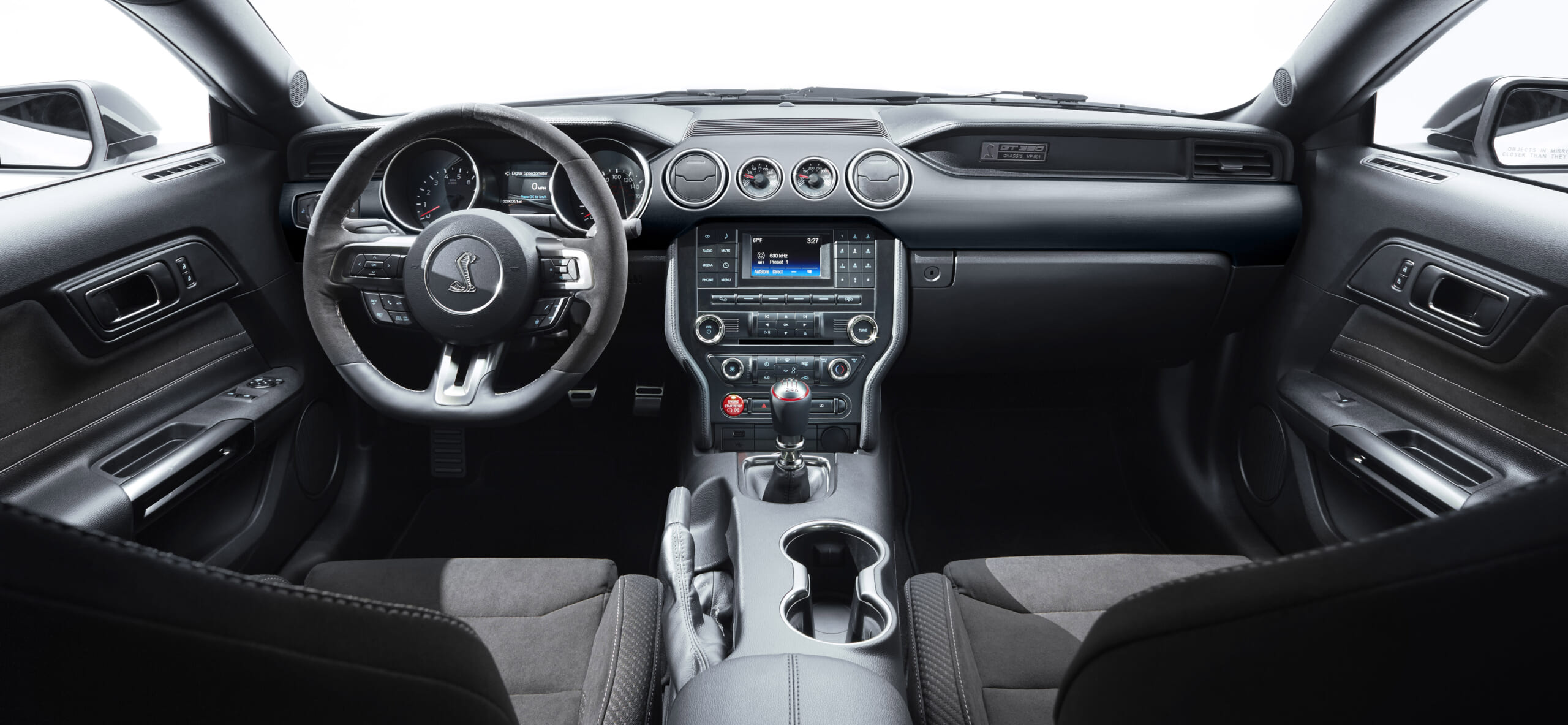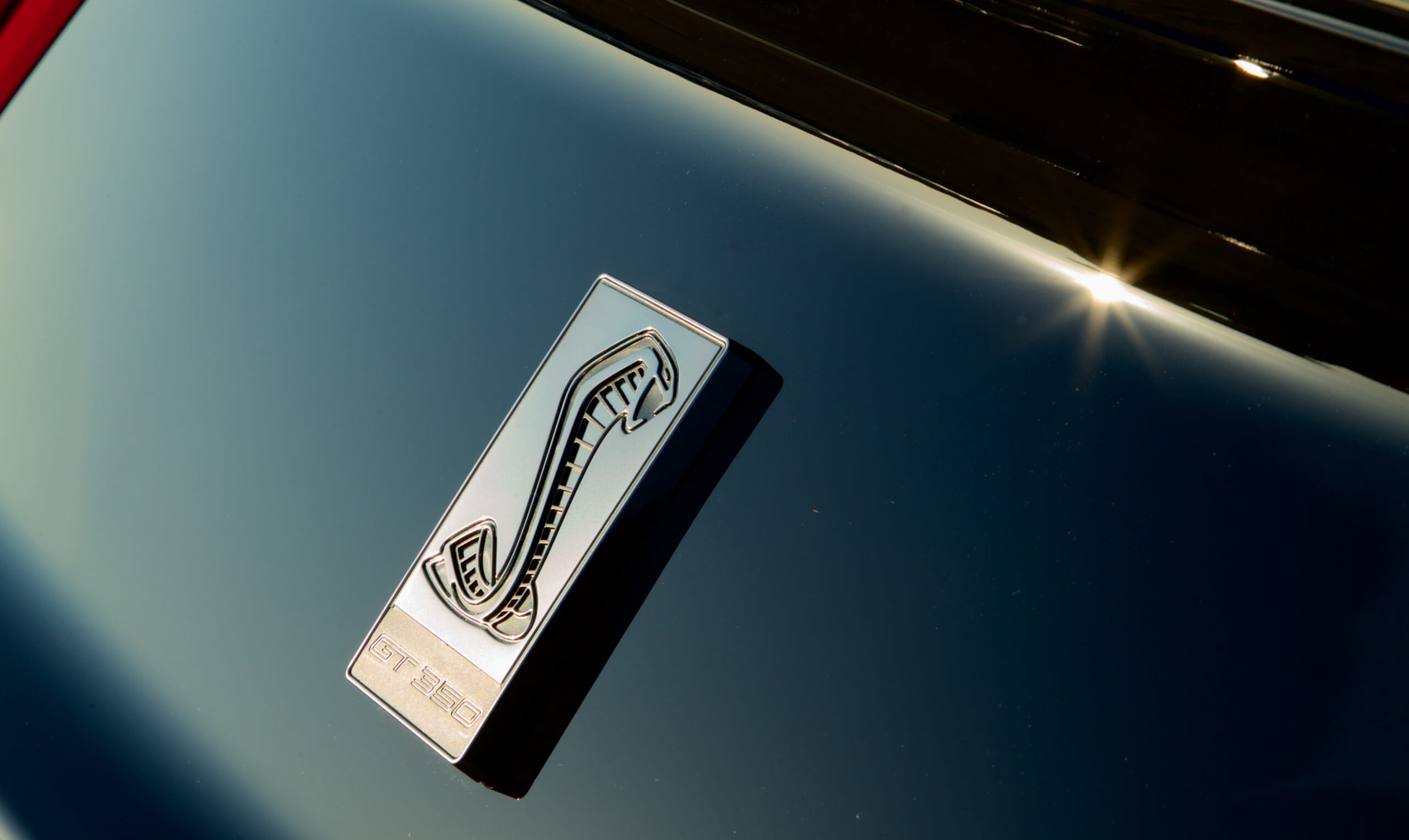The 2016 Ford Shelby GT350 Mustang Is a Track-Ready Treat
The sound and the fury of Ford’s latest Mustang is a pleasure to behold.


“Do you mind if I follow you, so I can hear what it sounds like?” That was the question at a gas station as I refilled the thirsty Ford Shelby GT350 Mustang with 93 octane premium.
I have a poster in my house of a red ’63 split-window Corvette captioned, “They don’t write songs about Volvos.” Similarly, no one asks to follow a Volvo just to hear its exhaust note. Such is the power of the $57,000, 526-horsepower 2016 GT350’s legend already.
So get ready for those gas station questions. That’s both because this heartland hero draws a crowd wherever it goes, and also since you’ll be spending a lot of time at the pumps, because the EPA estimated 14 mpg city proved to be an accurate estimate of the GT350’s astounding thirst. The problem is compounded by that intoxicating exhaust note which encourages keeping the car a gear lower than it should be, just to hear its every rumble and burble.

What sets the GT350’s frenetic sound apart from the basso profondo note of traditional American V8s is its crankshaft. The Shelby employs a racing-style flat-plane crank that places the piston firings 180 degrees apart instead of regular crankshaft’s smoother-running 90-degree interval.

Such crankshafts produce a shriller-sounding exhaust and create more vibration that has to be accounted for when designing the engine, so they are normally seen at the racetrack or in the engine bay of exotic Italian V8s like the Ferrari 488 GTB. The GT350’s engine produces a hammering staccato blast like that of a piston-engine warbird on climb-out.
In addition to creating more vibration, this arrangement also creates the potential for more power, because of the ability of cylinders firing half a rotation apart to reinforce each other’s airflow better.
Ford’s designers knew the sound would be the GT350’s signature, so they installed muffler by-pass valves that pipe unadulterated joy out the tailpipes when the driver’s foot is on the floor. Switching the drive mode to “Sport” from “Normal” causes the GT350 to bypass its mufflers more frequently.
Sport mode also tightens the response of the magnetically adjustable shock absorbers and lessens the power assist to the steering for more direct road feel. Switching to “Track” mode turns these changes up another notch, while also turning off the traction control.
Using Sport mode during street driving can be tiresome, not only because of the amped-up sound level, but because the tauter steering is more prone to tramlining, as the fat front tires seem to grab pavement seams and follow road crown and lane ruts like a trolley on tracks. The extra assistance of Normal steering model makes this tendency less apparent.
On the track, there is a similarly big difference, as Normal mode leaves the GT350’s reflexes a bit sluggish, while Track mode makes the car quick as a caffeinated feline. The firmed-up dampers permit almost no dive under braking or body roll under turn-in, contributing to an authentic race car experience when hammering around the track.
Its on-track excellence prompted West Virginia’s Summit Point track manager Chris White to remark on it out loud a couple times during our test drive.
The GT350’s paint and styling is as exuberant as its sound, so be prepared to draw legal scrutiny on both fronts. This double-whammy should encourage Shelby drivers to confine their enthusiastic driving to the race track as well as they can to avoid unpleasant discussions with law enforcement.
The Shelby’s six-speed manual shifter is commendably short and light in its action, though the clutch pedal has an unfortunate over-center feel about halfway through its stroke causing pedal effort to change midway. This is something other Fords exhibit, which is a disappointing oversight to see extend even to the GT350. At least the pedal effort is light.
The Shelby’s Brembo brakes are powerful and linear in their action, making it easy to trail brake into turns, especially because the magnetic shocks keep the car stable as the driver goes on and off the brakes and through corner turn-in.
The influence of damper control in brake effectiveness is too-often overlooked, and they combine to great effect in the GT350. As if to remind drivers of the hot-rod brake hardware at work, after a hard drive the two-piece brake rotors clink and tick due to the differing thermal expansion rates between the iron rotors and their lightweight aluminum mounts.
The Mustang is a bigger, heavier car than the 2016 Camaro, but this size doesn’t translate into more usability of the rear seat. Its legroom is marginally acceptable, but ingress and egress are very challenging and there’s insufficient headroom for average-height adults despite the uncomfortably low seat cushion.
The front seats are quite comfortable, but even here, GT350 occupants face a sea of hard, shiny black plastic where competitors have multiple colors and textures of softer materials. I understand that Ford justifies this by saying they chose to put the customers’ money into the GT350’s go-fast components, but when the price approaches $60,000, there is little opportunity to discuss the benefits of cost-cutting.
Fortunately, the GT350’s track-ready driving dynamics, brash styling and audacious soundtrack will more than offset any cockpit shortcomings for most customers. They will surely sell all of them they can build because the car is an instant collectors item that upholds the legendary status of the original Shelby GT350 from 1965.
For the latest car news, follow @MaximRides and Dan Carney on Twitter.
